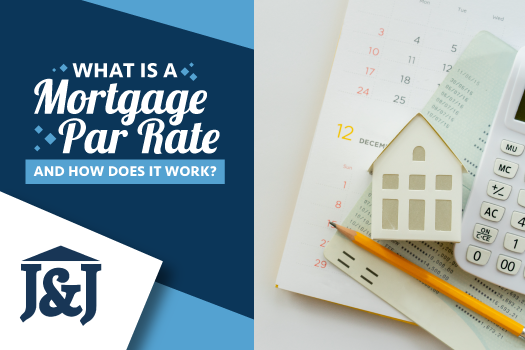Every homebuyer wants a low mortgage par rate because it can save them hundreds of…
Key Differences Between A 15-Year vs. 30-Year Mortgage
Interest rates are increasing in 2022. Whether you’re in the market to buy a new home or are thinking about refinancing an existing home loan, you should act soon. Either way, you’re probably already planning on taking out a 30-year fixed-rate mortgage; according to Freddie Mac, more than 90% of borrowers do. However, there are considerable benefits to opting for a 15-year home loan instead.
Choosing Between a 30-Year and 15-Year Loan Term is a Big Decision
Like many people, you may be wondering, “Isn’t a 30-year mortgage always best?” Most people opt for 30-year loans because they come with more manageable monthly payments. Since 30-year terms are the industry standard, borrowers often opt for them automatically. Before doing so, however, it pays to understand the differences between the two, which involve more than how much you’ll be paying every month.
Mortgage Loan Term Basics
Popular 30-year mortgage loans and their less-popular counterparts, 15-year mortgage loans, are structurally similar. These loans have fixed interest rates and monthly payments. The main difference between the two is the term – the allotted period to pay off the loan. With a term loan like a mortgage, the buyer pays interest calculated annually against the outstanding balance, or principal.
Over the life of a term mortgage loan, the portion that goes toward paying the interest and the portion that goes toward paying the principal change. At first, most of the monthly payment is applied toward interest charges. Later, more and more of the payment chips away at the principal. As a result, with a 30-year mortgage, the balance shrinks more slowly. You essentially borrow the same amount for more than twice as long as you would for a 15-year mortgage.
Primary Differences Between a 15-Year and 30-Year Mortgage
The most significant differences between a 15-year and 30-year mortgage loan include the following:
- Interest Rates – 15-year loans are less risky for banks and cost less for them to make. As a result, interest rates for 15-year mortgages are generally between one-quarter of one percentage point to one full percentage point lower than interest rates for 30-year home loans.
- Mortgage Insurance Premiums – Government-backed agencies like Freddie Mac and Fannie Mae impose higher loan-level price adjustments on 30-year mortgages than on 15-year mortgages. These adjustments are usually rolled into the interest rate.
- Monthly Mortgage Payments – Since a 30-year loan is spread out over twice the period of a 15-year loan, the monthly payments are much smaller, even when considering higher interest rates and additional fees. The monthly payment for a $300,000 loan with a 3.25% interest rate over 15 years is $2,108 while the monthly payment for a $300,000 loan with a 4% interest rate over 30 years is $1,432.
Which Option is Right for You?
Using the above example, you will pay $215,609 in interest charges over the life of a 30-year mortgage versus $79,441 throughout a 15-year one. Therefore, opting for a 15-year mortgage is typically much cheaper over the long run. However, the lower monthly payments of a 30-year loan can free up much-needed cash for other necessities, or you can invest the difference elsewhere. Mortgage lenders in Huntington Beach can help you determine which option suits your financial situation the best.



